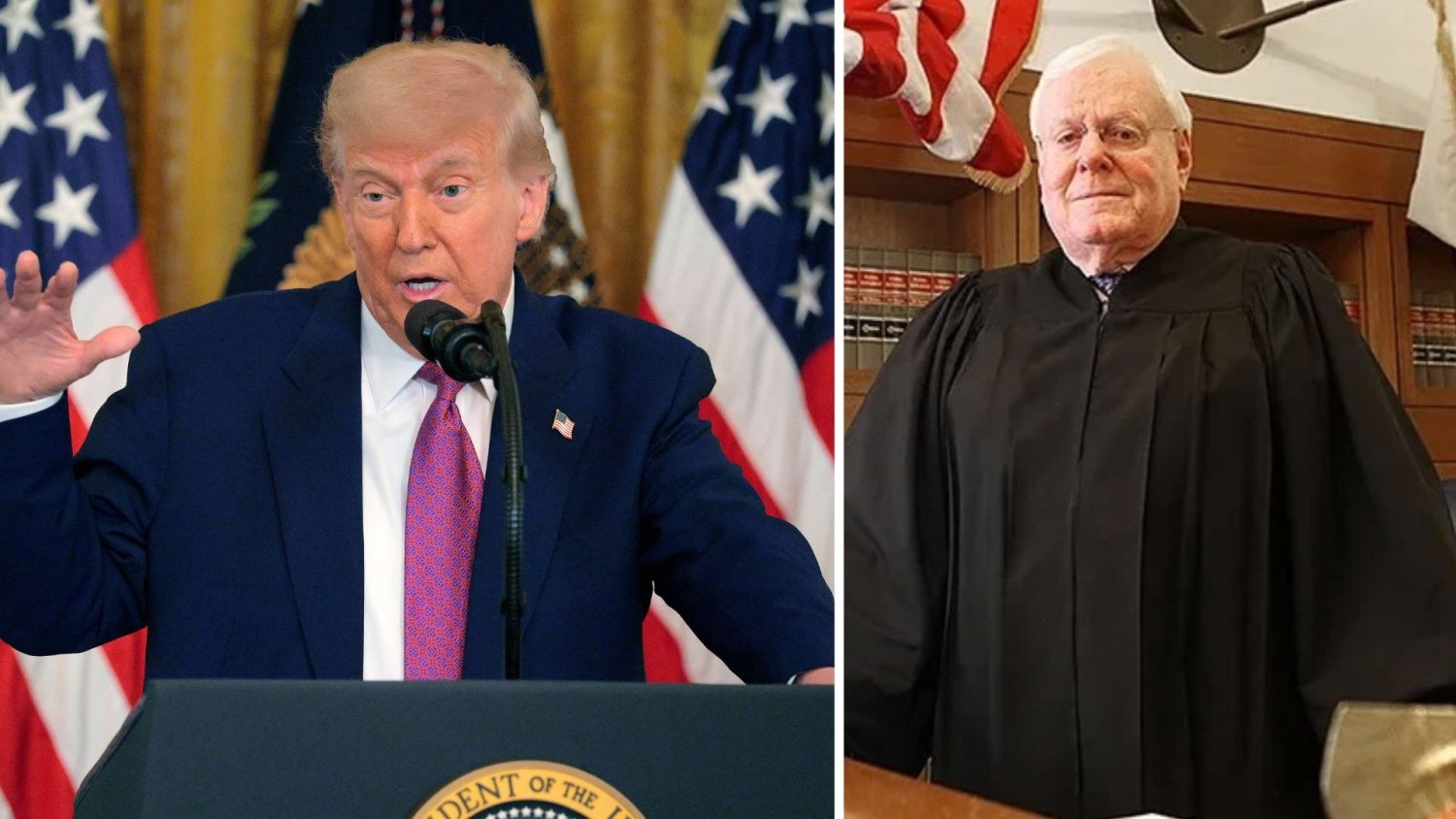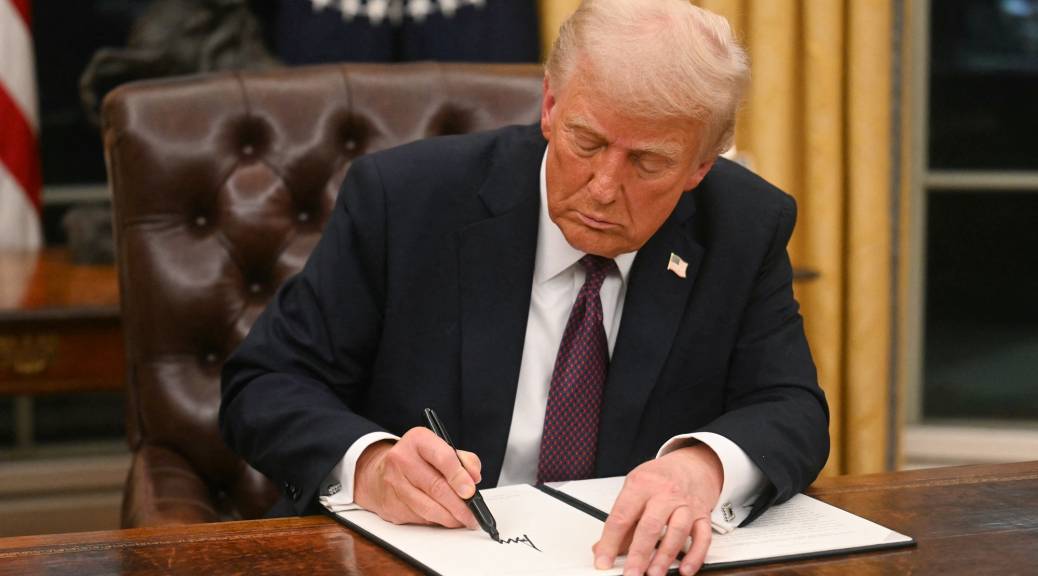
The Trump administration’s efforts to reshape America’s immigration system entered a new phase this week as the Justice Department confirmed that another San Francisco immigration judge has been dismissed.
Judge Shira Levine, appointed in late 2021, became the sixth judge removed from the city’s immigration bench since President Donald Trump returned to the White House.
The decision underscores the administration’s determination to accelerate mass deportations and restructure the immigration judiciary, even amid fierce criticism from immigrant advocates, former judges, and legal organizations.
Levine’s dismissal was abrupt. According to reports, she received no explanation for her removal, learning only that her services were no longer required.
Her departure followed a wave of firings since April, with Judges Chloe Dillon and Elisa Brasil — both of whom had among the nation’s highest asylum approval rates — also being forced out.
Dillon, who granted asylum in nearly 97% of her cases, said she was informed of her firing by a three-sentence email after returning from a years-long asylum hearing.
In her account, she had already prepared her ruling in favor of a family seeking refuge when the dismissal arrived, leaving her unable to deliver a decision. She described packing up her office in less than two hours, with no clarity on who would inherit her docket of more than 6,000 cases.
Five of the six dismissed judges had asylum approval rates well above the national average. The Transactional Records Access Clearinghouse (TRAC) reported that while the national asylum approval rate had dipped below 36% last year, San Francisco’s bench was granting asylum at rates more than twice as high.

For critics, the pattern is unmistakable: judges with professional backgrounds in immigrant defense or public interest law are being removed, while judges who previously advanced as immigration prosecutors remain in place.
Supporters of the administration’s moves frame them as necessary to restore balance to an immigration system that they say has grown too lenient. They argue that immigration judges must follow strict statutory standards and that unusually high asylum approval rates reflect a failure to apply those standards consistently.
President Trump’s 2024 campaign made mass deportation a cornerstone issue, promising to overhaul the courts to ensure quicker, tougher rulings. The dismissals in San Francisco are being portrayed by allies as part of fulfilling that mandate.
The Justice Department insists that all federal employees, including immigration judges, serve at the will of the executive branch.
Trump-era reforms emphasized that immigration courts are not independent judicial bodies but administrative tribunals under the Department of Justice. That legal framework allows for at-will dismissals without formal cause.
Immigrant advocates and former judges view the firings as politically motivated purges. Dana Leigh Marks, a longtime San Francisco immigration judge, argued that the pattern reflects ideological targeting rather than legitimate performance concerns.
“They are specifically targeting one end of the spectrum because they don’t like those results,” Marks told reporters. She suggested the dismissals send a chilling message to remaining judges: grant too many asylum cases, and you risk your job.
Others worry that the restructuring undermines judicial independence. By rewarding judges who deny asylum and removing those who grant it, critics say the administration is transforming immigration courts into enforcement arms rather than neutral adjudicators.

Civil rights groups have also raised alarms about due process. They argue that applicants appearing before the immigration court are entitled to impartial hearings, not proceedings overseen by judges pressured to meet political targets.
The firings are not just an internal matter for the courts; they carry real-world consequences for thousands of immigrants. With judges dismissed mid-docket, hearings have been delayed or reassigned. Families who had waited years for their cases now face further uncertainty.
San Francisco has historically been one of the nation’s friendliest jurisdictions for asylum seekers, with higher rates of legal representation and stronger networks of nonprofit support.
Critics argue that dismantling this bench is designed to reduce approval rates in one of the few places where applicants had a fighting chance.
Already, national approval rates have fallen sharply. TRAC data shows that approval rates plummeted from roughly 50% in fiscal year 2019 to less than 36% in 2024.
Advocates warn the current restructuring could push them even lower, further narrowing the path for those fleeing violence, persecution, or political oppression abroad.
The firings also reflect a broader political agenda. President Trump’s administration has tied immigration policy to its themes of national security and economic protectionism.
By reshaping the immigration courts, the White House is seeking to accelerate deportations and limit humanitarian relief, making good on campaign pledges to prioritize removal over refuge.

Democrats in Congress have denounced the firings as a partisan assault on judicial independence. They argue that immigration courts already face overwhelming backlogs — with more than 3 million cases pending nationwide — and that dismissing experienced judges will only worsen the crisis.
The administration, however, is not retreating. Last month, the Justice Department announced that 600 military lawyers would be authorized to serve as temporary immigration judges, reducing the traditional requirement that such appointees have prior immigration law experience.
Critics see this as a move to stack the courts with adjudicators more likely to rule in favor of the government.
Underlying the controversy is a deeper struggle over how asylum law should be interpreted. Traditionally, asylum has been granted to individuals who demonstrate a well-founded fear of persecution in their home countries based on race, religion, nationality, political opinion, or membership in a particular social group.
Advocates argue that these categories must adapt to modern realities such as gang violence, gender-based persecution, or climate displacement. The Trump administration, by contrast, has sought to narrow eligibility criteria and speed up denials.
By removing judges with histories of expansive interpretations, the administration appears intent on reshaping not just who sits on the bench but also the very meaning of asylum under U.S. law.
The dismissals in San Francisco may be a preview of broader national restructuring. If the administration continues removing judges with higher-than-average asylum approval rates, the immigration judiciary could be fundamentally reshaped within a few years.
Supporters say this would restore discipline and uniformity. Critics warn it could erode due process and tarnish America’s reputation as a haven for the persecuted.

Either way, the firings highlight the extraordinary power presidents wield over immigration courts, which unlike Article III courts lack independence from the executive branch.
As the Trump administration pushes forward with its agenda, the nation’s immigration system is becoming not just a legal battleground but a political flashpoint, reflecting deeper divisions over identity, sovereignty, and humanitarian obligations.
The dismissal of Judge Shira Levine and her colleagues marks more than just personnel changes. It symbolizes the administration’s determination to enforce a new vision of immigration justice — one where asylum is harder to obtain, deportations are prioritized, and judicial discretion is tightly controlled.
For President Trump and his allies, the firings represent a necessary step in delivering on campaign promises of mass deportation and strict border enforcement. For critics, they mark a dangerous politicization of the courts and a betrayal of American ideals.
As more judges face dismissal and military lawyers take their place, the future of the immigration system remains uncertain. What is clear is that the courtroom has become yet another arena where the nation’s political battles are being fought, and where the stakes — for immigrants, for workers, and for the balance of power — could not be higher.


-1750401834-q80.webp)
